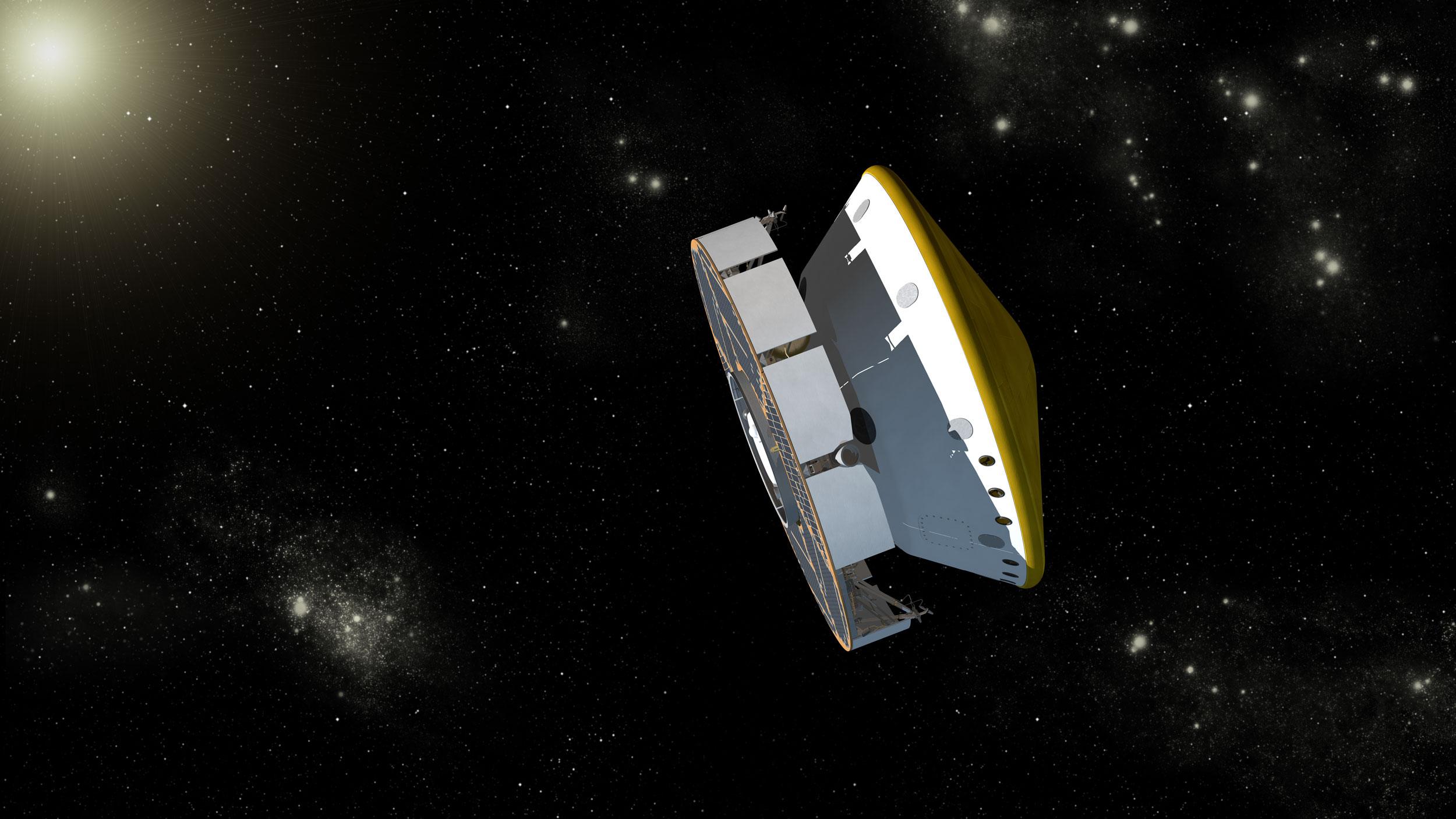NASA Rover En Route to Mars to Make Big Move Wednesday

A NASA rover on its way to Mars will make the biggest maneuver of its nearly nine-month journey through deep space Wednesday (Jan. 11).
The spacecraft carrying the 1-ton Curiosity rover, which launched toward the Red Planet on Nov. 26, will perform a three-hour series of engine burns beginning at 6:00 p.m. EST (2300 GMT) Wednesday. The maneuver will redirect the rover more precisely toward its landing site at Mars' Gale Crater, researchers said.
The correction is necessary because mission managers intentionally aimed the launch away from Mars. This was done to prevent the Atlas 5 rocket's upper stage — which was not cleaned as diligently as Curiosity — from hitting the Red Planet and possibly contaminating it with Earth microbes.
Wednesday's maneuver should impart a velocity change of about 12.3 mph (19.8 kilometers per hour), researchers said.
"We are well into cruise operations, with a well-behaved spacecraft safely on its way to Mars," Curiosity's cruise mission manager, Arthur Amador, of NASA's Jet Propulsion Laboratory in Pasadena, Calif., said in a statement. "After this trajectory correction maneuver, we expect to be very close to where we ultimately need to be for our entry point at the top of the Martian atmosphere." [Video: Curiosity's Peculiar Mars Landing Described]
Curiosity is slated to arrive at Mars on the night of Aug. 5. In addition to Wednesday's burn, the mission team can perform five more trajectory-correction maneuvers if they need to fine-tune to rover's path, researchers said.
Mission engineers are also working to figure out why Curiosity's celestial-navigation software reset itself on Nov. 29. That glitch has caused no real problems, but the team would like to know if the spacecraft's backup main computer is susceptible to a similar issue, officials said.
Get the world’s most fascinating discoveries delivered straight to your inbox.
Curiosity's spacecraft operations team will also conduct a weeklong set of engineering checkouts beginning on Sunday (Jan. 15). The tests will look at components of Curiosity's landing and communications systems, researchers said.
Curiosity is the centerpiece of NASA's $2.5 billion Mars Science Laboratory mission, which aims to determine if the Gale Crater area is, or ever was, capable of supporting microbial life. To help it answer this question, the car-size rover sports 10 different science instruments, including a rock-zapping laser and gear that can identify organic molecules, the carbon-containing building blocks of life as we know it.
As of Saturday (Jan. 7), Curiosity had chewed up about 73 million miles (117 million km) of its 352-million-mile (567-million-km) journey through deep space. It's currently traveling at about 9,500 mph (15,200 kph) relative to Earth and 69,500 mph (111,800 kph) relative to the sun.
This story was provided by SPACE.com, a sister site to LiveScience. Follow SPACE.com for the latest in space science and exploration news on Twitter @Spacedotcom and on Facebook.




